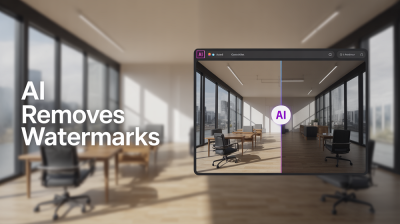In the realm of science, tools that streamline processes are highly valued. Introducing the ChatGPT API and Google Colab. When these two are combined they provide a smooth experience for addressing challenges. Picture having a robust AI model, at your disposal to assist with language processing tasks all while using a user friendly platform like Google Colab that allows you to execute code without the necessity for expensive hardware.This powerful duo has the potential to revolutionize your data science workflow making it more efficient and accessible. If you share my sentiments you'll truly appreciate how these tools work hand in hand to simplify the often demanding tasks of data manipulation and analysis.
Why Use ChatGPT API for Data Science Projects?

Upon discovering the ChatGPT API I found its potential to elevate data science endeavors quite fascinating. This API brings forth an array of advantages, such as.
- Natural Language Processing: The ChatGPT API excels in understanding and generating human-like text, which can be incredibly useful for tasks like sentiment analysis or text summarization.
- Automation: By integrating ChatGPT into your projects, you can automate responses, generate content, and even assist with data cleaning.
- Customization: The API allows for fine-tuning and customization based on your specific needs, making it adaptable to various data science applications.
Based on my observations using ChatGPT in data initiatives has not only made processes more efficient but has also paved the way for creative problem solving. Whether you’re examining feedback or developing forecasting models this tool brings an element of elegance that’s difficult to surpass.
Setting Up Your Google Colab Environment
Google Colab is a game changer for those diving into Python for data science. It offers a hassle free cloud environment that lets you code and run your scripts seamlessly. Getting started is a breeze all you need to do is follow these simple steps.
- Access Google Colab: Simply visit Google Colab and sign in with your Google account.
- Create a New Notebook: Click on "New Notebook" to start a fresh project. You can name your notebook and choose your runtime settings.
- Install Required Libraries: Use the code cells to install libraries you need. For instance, to use the ChatGPT API, you might need the requests library:
!pip install requests
- Import Libraries and Setup: Import necessary libraries and set up your environment. It’s straightforward, with minimal configuration needed.
Throughout my experience using Google Colab I have come to appreciate its immense value as a resource for seamless collaboration and experimentation. The seamless integration with Google Drive ensures that your work is securely stored and readily accessible. With just a few simple clicks you can delve into the robust features of the ChatGPT API.
Connecting ChatGPT API with Google Colab
Setting up the ChatGPT API in Google Colab may appear challenging initially but it becomes easier once you become familiar with the process. I recall my try getting caught up in the complexities of API keys and authentication issues but it was all part of the journey. Here's a straightforward guide to assist you in linking these two powerful tools.
- Obtain Your API Key: Before anything else, you need to get an API key from OpenAI. Head over to the OpenAI API Keys page and generate your key.
- Install the Required Library: In your Colab notebook, you’ll need the `openai` library to interact with the API. Install it using:
!pip install openai
- Set Up Your API Key: To keep your key secure, use environment variables. In your notebook, add:
import openai
openai.api_key = 'YOUR_API_KEY'
- Verify the Connection: To make sure everything is set up correctly, run a simple test. For example:
response = openai.Completion.create(engine="text-davinci-003", prompt="Hello, world!", max_tokens=5)
print(response.choices[0].text.strip())
Integrating the ChatGPT API into Google Colab can be a bit challenging at first. However once you get it right, it becomes a smooth process. I vividly recall the sense of relief I felt when I received that initial successful response – it was truly a victorious moment!
Running Your First Query with ChatGPT API
Now that everything is set up, let's dive into running your initial query. This is where the real fun begins and trust me, witnessing the AI spring into action is always thrilling. Here's a guide on how to execute your first query step by step.
- Define Your Prompt: Think about what you want to ask or generate. For example, you might want to get a summary of a text. Your prompt could be as simple as:
prompt = "Summarize the following text: [Your Text Here]"
- Make the API Call: Use the `openai.Completion.create` method to send your prompt. Here’s a basic example:
response = openai.Completion.create(
engine="text-davinci-003",
prompt=prompt,
max_tokens=100
)
print(response.choices[0].text.strip())
- Review the Output: The response will contain the generated text. Take a moment to review it and see if it meets your expectations.
Executing the initial query feels akin to unwrapping a present, filled with excitement. I distinctly remember my initial experience where I was pleasantly surprised by the AI's comprehension and ability to produce pertinent content. It's these instances that truly make collaborating with AI a fulfilling experience.
Handling Responses and Integrating Data
Once you begin receiving replies from the ChatGPT API managing them effectively is crucial. Its not solely about obtaining responses but also about seamlessly incorporating those responses into your processes. Here are some tips on how to manage and maximize the value of the information.
- Parse the Response: The API returns a JSON object. Extract the text or data you need using Python’s JSON handling capabilities. For example:
response_text = response.choices[0].text.strip()
- Integrate with Your Data: If you’re using the data in a larger project, such as a report or analysis, make sure to format it appropriately. You might use Pandas to structure the data:
import pandas as pd
df = pd.DataFrame([response_text], columns=["Generated Text"])
- Handle Errors Gracefully: Sometimes things don’t go as planned. Implement error handling to manage issues like API rate limits or network errors.
Using the ChatGPT API to enhance my work is a rewarding experience. When I seamlessly blend the AI generated content into my projects it brings an extra level of richness and perspective. The key lies in fine tuning and adjusting the information to suit your requirements and fully harnessing the potential of this remarkable technology.
Examples of Data Science Projects with ChatGPT API
As I explore the field of science I’ve discovered that using the ChatGPT API brings a range of opportunities. It can be utilized in different projects such as analyzing customer feedback or creating data. Here are some examples that could inspire your creativity.
- Sentiment Analysis: By feeding customer reviews into ChatGPT, you can gauge the overall sentiment more accurately. This is especially useful for businesses wanting to understand customer satisfaction.
- Content Generation: Whether you’re drafting marketing copy or generating product descriptions, ChatGPT can create human-like text that’s engaging and relevant. I’ve used it to write blog posts and generate creative content.
- Data Summarization: If you have large volumes of text, ChatGPT can summarize the key points effectively. For instance, summarizing research papers or lengthy reports into concise paragraphs.
- Chatbots and Virtual Assistants: Integrate ChatGPT into your customer service systems to handle common queries. I’ve seen how this can significantly reduce the workload on human agents and improve response times.
Throughout all these endeavors, I have seen how ChatGPT can turn unprocessed information into valuable insights. The trick lies in trying out different approaches and finding ways to customize it to suit your unique requirements.
Common Challenges and Solutions
Every tool has its idiosyncrasies and the ChatGPT API is no different. As I’ve used it I’ve come across some recurring hurdles but I’ve also discovered ways to overcome them. Here’s a summary of my insights:
- API Rate Limits: One issue you might face is hitting rate limits. This can be managed by batching your requests or optimizing your prompts to make them more efficient.
- Handling Inaccurate Responses: Sometimes, the AI might produce responses that aren’t quite right. It helps to refine your prompts and include specific details to guide the AI better.
- Integration with Other Tools: Integrating ChatGPT with other data tools or platforms can be tricky. Ensure your data flows smoothly by using appropriate libraries and handling exceptions properly.
- Cost Management: Depending on your usage, costs can add up. Keep track of your API usage and consider using cost-saving features or exploring pricing plans that fit your needs.
Although these obstacles may be exasperating discovering solutions is an essential aspect of growth. Overcoming each challenge enhances our comprehension of utilizing ChatGPTs capabilities, more efficiently.
FAQ
Exploring the realm of ChatGPT API and Google Colab can bring up some queries. Here is a set of commonly asked questions that I’ve come across along with responses that could assist in clearing up any misunderstandings.
What is the ChatGPT API, and how does it work?
- The ChatGPT API is a tool provided by OpenAI that allows you to integrate the capabilities of the ChatGPT language model into your applications. It works by sending a text prompt to the API, which then processes it and returns a response. Think of it as a conversation with a highly advanced chatbot that can generate text based on your inputs.
How do I obtain an API key for ChatGPT?
- To get an API key, you need to sign up for an account on the OpenAI platform. Once logged in, navigate to the API section and generate a key. This key will be required to authenticate your requests when using the ChatGPT API.
Can I use Google Colab for free?
- Yes, Google Colab offers a free tier that provides access to basic features and resources. For more intensive computing needs, such as long-running tasks or more powerful hardware, you might consider Colab’s paid options. However, for many data science projects, the free version is more than sufficient.
What are some common issues when using ChatGPT API with Google Colab?
- Common issues include handling API rate limits, managing authentication errors, and integrating the API output into your workflow. To address these, ensure your API key is correctly set up, optimize your request frequency, and use appropriate error-handling mechanisms in your code.
How do I handle errors or unexpected responses from the API?
- When dealing with unexpected responses or errors, it’s crucial to implement error handling in your code. This includes checking for specific error codes and setting up try-except blocks in Python to manage exceptions. Additionally, refining your prompts can help improve the relevance and accuracy of the responses.
Are there any best practices for using ChatGPT in data science projects?
- Yes, there are several best practices to follow:
- Be specific with your prompts: Clear and detailed prompts yield better responses.
- Monitor your API usage: Keep track of the number of requests to avoid hitting rate limits.
- Validate outputs: Always review the AI-generated content to ensure it meets your project’s requirements.
Conclusion
Reflecting on my journey with the ChatGPT API and Google Colab I can’t help but appreciate how these resources have transformed my data science workflow. They streamline processes and also unleash fresh possibilities for creativity and productivity. Whether you’re exploring sentiment analysis crafting content or developing chatbots the synergy between ChatGPT and Colab provides a robust foundation for groundbreaking ideas.While there may be some obstacles and a learning process involved in adopting these tools the benefits they bring are definitely worth it. Speaking from my own experience I can say that the process of incorporating and using ChatGPT has been enlightening and fulfilling. Continue to explore and try things out and you'll discover that these tools can greatly improve your data science endeavors.
 Upon discovering the ChatGPT API I found its potential to elevate data science endeavors quite fascinating. This API brings forth an array of advantages, such as.
Upon discovering the ChatGPT API I found its potential to elevate data science endeavors quite fascinating. This API brings forth an array of advantages, such as.
 admin
admin








